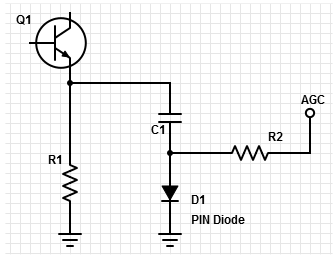neazoi
Advanced Member level 6
HEllo, I would like to apply local agc on the final BJT of my oscillator amplifier **broken link removed** using local feedback, i.e agc applied only at the final stage. Is that possible and how to?
Follow along with the video below to see how to install our site as a web app on your home screen.
Note: This feature may not be available in some browsers.
Two ways as I see it, 1, is to include a diode in series with the earthy end of C12, as the current increases in this diode, its impedance falls and more voltage is dropped across the transformer. the other way is to reduce the bias on Q5 and Q6 by returning R12 to a slightly negative supply. It all depends on the amount of control and distortion you want. The other way is to build a current controlled diode attenuator on the output.
Frank
Saying you want no distortion makes clear that "AGC on BJT amplifier" won't work. A variable FET attenuator is basically a good idea, it won't give considerable distortions if designed right.
I think that it would be however preferable to implement a level control for the oscillator itself, in case of doubt it should further improve the frequency stability.

A control voltage has to derived for any kind of attenuator, in so far the problem isn't specific to FET I think.My problem is that I do not know how to derive the voltage needed for the gate, so that an AGC effect is caused by the attenuator.